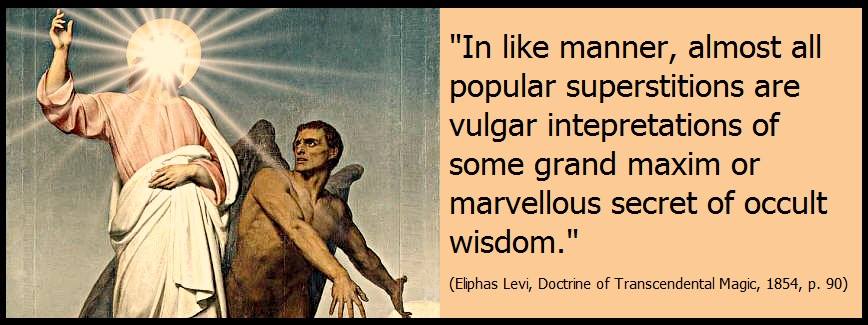Page 275
The author from whom the above is quoted says that “the seeds of vice and crime appear to be sown under the surface of society, and to spring up and bring forth fruit with appalling rapidity and paralyzing succession.”
In the presence of these striking phenomena science stands speechless; she does not even attempt to conjecture as to their cause, and naturally, for she has not yet learned to look outside of this ball of dirt upon which we live, and its heavy atmosphere, for the hidden influences which are affecting us day by day, and even minute by minute. But the ancients, whose “ignorance” is assumed by Mr. Proctor, fully realized the fact that the reciprocal relations between the planetary bodies is as perfect as those between the corpuscles of the blood, which float in a common fluid; and that each one is affected by the combined influences of all the rest, as each in its turn affects each of the others. As the planets differ in size, distance, and activity, so differ in intensity their impulses upon the ether or astral light, and the magnetic and other subtile forces radiated by them in certain aspects of the heavens. Music is the combination and modulation of sounds, and sound is the effect produced by the vibration of the ether. Now, if the impulses communicated to the ether by the different planets may be likened to the tones produced by the different notes of a musical instrument, it is not difficult to conceive that the Pythagorean “music of the spheres” is something more than a mere fancy, and that certain planetary aspects may imply disturbances in the ether of our planet, and certain others rest and harmony. Certain kinds of music throw us into frenzy; some exalt the soul to religious aspirations. In fine, there is scarcely a human creation which does not respond to certain vibrations of the atmosphere. It is the same with colors; some excite us, some soothe and please. The nun clothes herself in black to typify the despondency of a faith crushed under the sense of original sin; the bride robes herself in white; red inflames the anger of certain animals. If we and the animals are affected by vibrations acting upon a very minute scale, why may we not be influenced in the mass by vibrations acting upon a grand scale as the effect of combined stellar influences?
“We know,” says Dr. Elam, “that certain pathological conditions have a tendency to become epidemic, influenced by causes not yet investigated. . . . We see how strong is the tendency of opinion once promulgated to run into an epidemic form — no opinion, no delusion, is too absurd to assume this collective character.
We observe, also, how remarkably the same ideas reproduce themselves and reappear in successive ages; . . . no crime is too horrible to become popular, homicide, infanticide, suicide, poisoning, or any other diabolical human conception.
Page 276
In epidemics, the cause of the rapid spread at that particular period remains a mystery!”
These few lines contain an undeniable psychological fact, sketched with a masterly pen, and at the same time a half-confession of utter ignorance — “Causes not yet investigated.” Why not be honest and add at once, “impossible to investigate with present scientific methods”?
Noticing an epidemic of incendiarism, Dr. Elam quotes from the Annales d’Hygiene Publique the following cases: “A girl about seventeen years of age was arrested on suspicion . . . she confessed that twice she had set fire to dwellings by instinct, by irresistible necessity. . . . A boy about eighteen committed many acts of this nature. He was not moved by any passion, but the bursting-out of the flames excited a profoundly pleasing emotion.”
Who but has noticed in the columns of the daily press similar incidents? They meet the eye constantly. In cases of murder, of every description, and of other crimes of a diabolical character, the act is attributed, in nine cases out of ten, by the offenders themselves, to irresistible obsessions. “Something whispered constantly in my ear. . . . Somebody was incessantly pushing and leading me on.” Such are the too-frequent confessions of the criminals. Physicians attribute them to hallucinations of disordered brains, and call the homicidal impulse temporary lunacy. But is lunacy itself well understood by any psychologist? Has its cause ever been brought under a hypothesis capable of withstanding the challenge of an uncompromising investigator? Let the controversial works of our contemporary alienists answer for themselves.

Moe is the founder of GnosticWarrior.com. He is a father, husband, author, martial arts black belt, and an expert in Gnosticism, the occult, and esotericism.

![How one in the province of the Northumbrians, rose from the dead, and related many things which he had seen, some to be greatly dreaded and some to be desired [Circ. 696 A.D.] | Book 5 | Chapter 11 How one in the province of the Northumbrians, rose from the dead, and related many things which he had seen, some to be greatly dreaded and some to be desired [Circ. 696 A.D.] | Book 5 | Chapter 11](https://www.gnosticwarrior.com/wp-content/plugins/contextual-related-posts/default.png)




